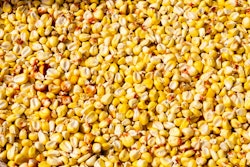
The U.S. grain and fuel industries are undergoing a dramatic transformation, with soybeans at the heart of the shift. At GEAPS Exchange 2025, leaders from the American Soybean Association, Renewable Fuels Association and National Corn Growers Association shared their perspective on the factors that have propelled soybean oil into the spotlight.
Historically, soybean processing prioritized meal production, used primarily for animal feed. However, policy incentives, like the California Low Carbon Fuel Standard, have significantly altered the value equation. While the oil once accounted for only 20% of the crop’s value, it’s nearly equivalent to soybean meal now.
Soybean crush plant development has surged the past few years. In 2023 alone, the industry saw 13 new crush plants and 10 expansions come online. The driving force? The booming demand for renewable diesel and the rapidly emerging market for sustainable aviation fuel (SAF). With a potential 35 billion-gallon annual demand, SAF presents the largest opportunity yet for soybean-based fuels.
This profound shift isn’t just affecting processing — it’s also reshaping the geography of grain flow, as soybeans are increasingly processed domestically rather than being exported. A panelist at GEAPS Exchange noted that North Dakota once exported 90% of its soybeans and now crushes 40% locally, while Iowa’s local processing jumped from 60% to as high as 85%.
But the intense focus on oil production also presents the challenge of surplus soybean meal supply, forcing the industry to innovate. New export markets, industrial applications such as fiberboard, adhesives and other value-added solutions are being explored to absorb the excess.
Soybean producers are strategically positioning themselves as the future of renewable energy. While electric vehicles may dominate the roads, aviation will continue to rely on liquid fuels — making SAF a long-term opportunity on the horizon.
As the needle continues to shift toward soybean oil, grain processing, energy and global markets will be impacted. This example is not the first time, nor the last, American agricultural innovation will be tested to transform a humble crop into a cornerstone of sustainable energy and economic opportunity.












